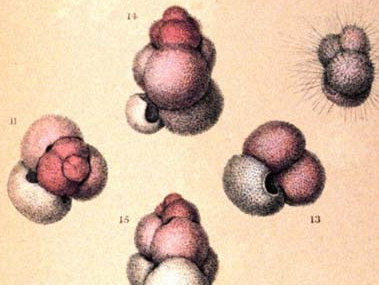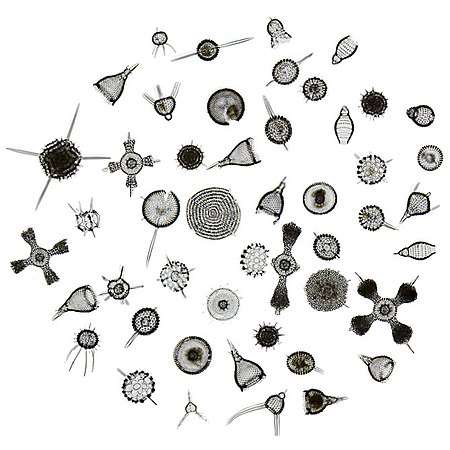In our last article we asked the question – “what are protozoans?” As we mentioned then the breakdown of the word includes “proto” which means “before”, and “zoan” which refers to animals. These are the “before animals” – meaning animal-like creatures BEFORE there were true animals.
They are single celled creatures that lack a cell wall and chlorophyll – animal-like – but they are only single celled – so, not true animals. Being animal-like means they cannot produce their own food as the diatoms, dinoflagellates, seaweeds, and true plants do. Rather, they must consume food as animals do. Some feed on diatoms and dinoflagellates. Some feed on decaying organic matter on the seafloor. Some are parasitic and feed off of a host organism. Some feed on other protozoans. And some do a combination. But they are all consumers.
The group is classified into six phyla mostly based on how they move. One subphylum is the Sarcodinids – which move using blobby extensions of their cytoplasm called pseudopods. Under a microscope they would resemble a fried egg oozing across the slide. They are NOT fast. They can use these pseudopods not only for moving but for gathering food. I remember watching them under a scope in college. They slowly oozed across the slide engulfing most other protozoans and phytoplankton they encountered. They were like the “sharks” of the micro-world. Many live on the seafloor, or within the sediments themselves. Some are parasites. And there are a few planktonic forms. Their primary role in the marine system is moving energy through the food chain and cleaning up the environment. As with the flagellates, there two common groups in marine waters – the foraminiferans and the radiolarians.
The first true oceanographic research cruise was the voyage of the HMS Challenger in 1872. The chief scientist on this first expedition was Charles Wyville Thomson, a marine geologist and one very interested in what was on the ocean floor. During the first leg of the voyage – from Europe to the America’s – they collected sediment samples several time each day. By far most of the ocean floor was made of what was called “globigerina ooze”. Globigerinids are a group of marine foraminiferans. They produce a calcium carbonate shell that is chambered. Under a microscope they look very much like seashells. They are part of the plankton layers in the ocean – what would be called “zooplankton”. Many possess spines on their shells to help reduce sinking. When they die their shells fall to the seafloor. Over time they formed the thick layers of sediment Thomson witnessed and called “ooze”. He also discovered that most of the ocean floor is covered with these microscopic shells. The Gulf of Mexico is no different. Most formaminiferans live on the seafloor and contribute to the sediment layers from there. One group forms mats on rocks that look pink in color and are responsible for the pink sands found in Bermuda.
Another group of shelled amoeboid protozoans are the radiolarians. Under the microscope these are some of the most beautiful creatures you will find in the northern Gulf. Like diatoms, their shells are made of silica and look like glass. Most have spines and shapes that make them resemble snowflakes – truly beautiful. Like foraminiferans, when they die their shells settle on the seafloor and contribute to the ooze layers. Radiolarian ooze has been found as deep as 12,000 feet.
These small, microscopic amoeba like animals play an important role in moving food and energy through the Gulf. Their discovery on the seafloor helped marine geologists better understand how our oceans formed and how they have changed over time. On other beaches around the world, they have contributed to sands giving some beaches very unique colors – which are popular with tourists. They are an unknown, but important part of the marine community in the northern Gulf of Mexico.
References
Yaeger, R.G. 1996. Protozoa: Structure, Classification, Growth, and Development. Chapter 77. Medical Microbiology, 4th edition. https://www.ncbi.nlm.nih.gov/books/NBK8325/#A4082.
- Tips for Bear Encounters this Fall - November 10, 2025
- Pensacola Bay Invasive Species Summer Survey 2025 - November 3, 2025
- Our Environment: Part 24 – Our Changing Climate - November 3, 2025


